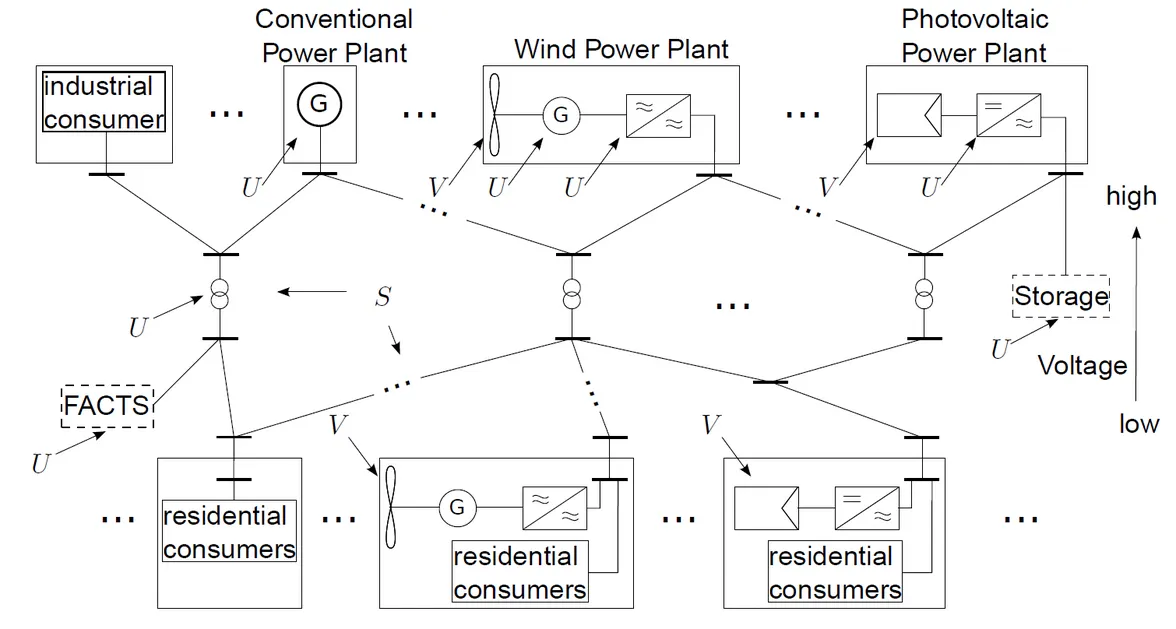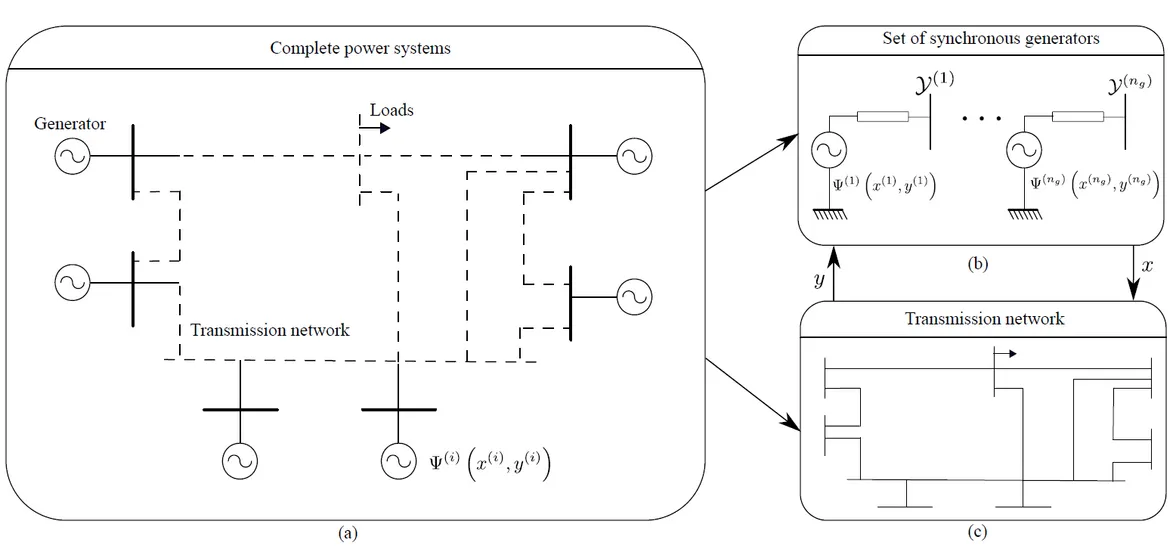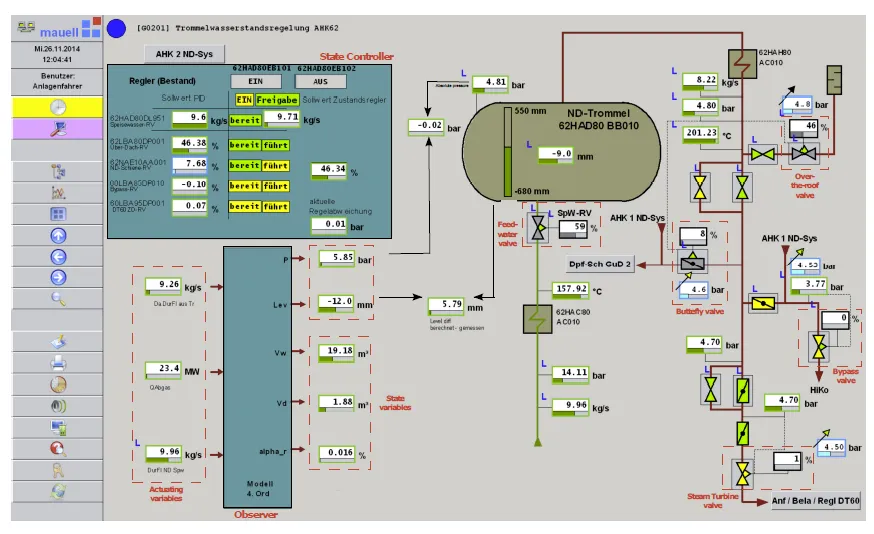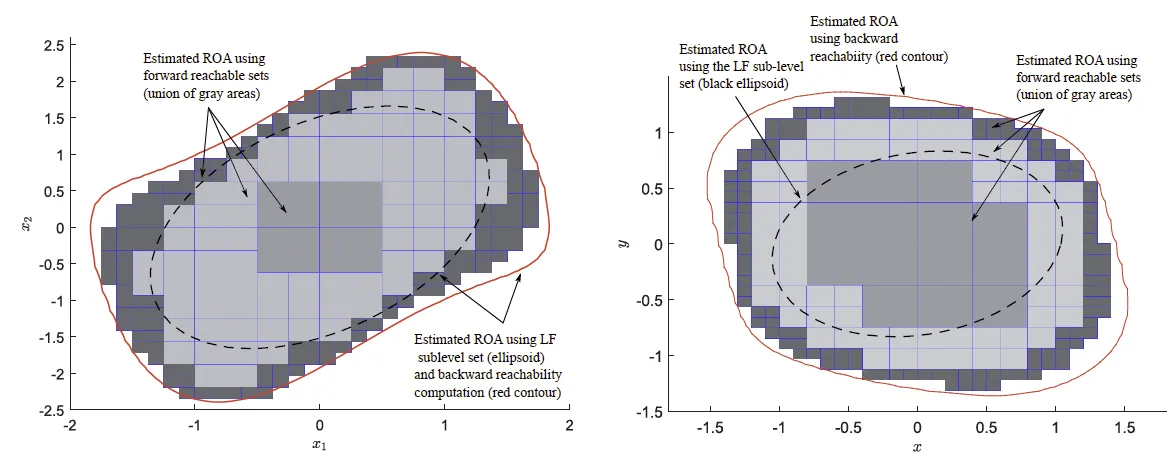ROCS-Grid
Analysis and Synthesis of Robustly Controlled Smart-Grid-Systems (ROCS-Grid)
Introduction
The energy sector is currently in the midst of a transition from centralized conventional power generation towards decentralized generation with a considerable share of renewable energy sources. This paradigm shift increases the complexity of the design, management, and control of the future power system due to the increase in the number of generating units, changing operating conditions, and uncertain prediction of renewable energy production. Besides those technical challenges, energy markets have been liberalized to a large extent, what results in an operation closer to the stability limit for cost reduction. In order to reliably operate future power systems, often referred to as smart grids, it is required to
- Manage bi-directional energy flow (consumers can become suppliers and vice versa).
- Increase flexibility to feed in highly variable energy sources.
- Verify the correct behavior considering all eventualities in increasingly uncertain energy production.

Objective
Motivated by the shortcomings of current techniques for modeling, control, and analysis of power grids, we aim at developing methods, which enable to maximally exploit possible smart grid performance while maintaining grid stability. We work on the design and verification of local decentralized controllers that consider physical interactions between different grid nodes to ensure stability of the overall grid. We plan to develop compositional techniques that allow one to guarantee properties of the complete system by controlling and analyzing subsystems separately. Set-based methods are developed to ensure stability of smart grids under all operating conditions. A special focus is on transient stability, the effects of variable energy production, and the detection of situations which result in voltage collapse.
Directions
1] Compostional Analysis of Power Systems: The challenges, associated with the analysis of power systems via the computation of reachable sets, are mainly the improvement of the algorithmic efficiency to scale towards industrially relevant problem sizes. In this paper, we present a compositional algorithm which drastically reduces the computational effort required to assess the dynamical response of power systems during transients, using reachability analysis. The main reason for the algorithmic efficiency is that we reformulate the transmission network into a set of subsystems, each consisting of a synchronous generator connected to a generator bus, whose algebraic constraints are unknown-but-bounded within some confidence intervals. This makes it possible to parallelize the computation of reachable sets for transient stability analysis, and more importantly, preserve the interaction and correlation between different machines connected to the grid.

2] Analysis and control applications in power plants: The load-following capabilities of power plants became increasingly important in recent years as a means of ensuring a reliable operation of future power systems. We propose a generic approach, based on reachability analysis, to rigorously verify the safety of critical components that often pose limitations on the flexibility of conventional power plants to perform fast load changes. The proposed reachability algorithm makes it possible to compute the bounds of all possible trajectories for a range of operating conditions while simultaneously meeting the practical requirements of a real power plant. As an example, we consider the verification of the water level inside a drum unit. In contrast to previous work, our results are based on measurement data of a realistic configuration of a boiler system located within a 450MW combined cycle plant in Germany. and load-following capabilities.

3] Stability analysis of nonlinear systems and its applications in power systems: The estimation of stability regions of nonlinear systems is of fundamental importance in a wide range of applications, such as e.g. autonomous systems, control of robotic manipulators, and transient stability of power systems. The dominant techniques for estimating the ROA are based on Lyapunov’s stability theory and its various extensions. We propose an algorithm to estimate the ROA of an equilibrium point via the computation of forward reachable sets. In this work, we implement a scalable and versatile algorithm that can provide accurate, and more importantly, provable estimates of the stability region.

4] LPV control of power systems: Transient stability analysis of synchronous generators is important for a secure operation of power systems. We present the design and verification of linear-parameter-varying (LPV) controllers to robustly establish transient stability of multi-machine power systems with formal guarantees. First, we transform power systems described by differential algebraic equations (DAEs) into modular LPV systems, such that the interaction and correlation between different machines connected to the grid is preserved. Then, we employ reachability analysis to determine the set of admissible parameter values which is required for the LPV controller synthesis. Afterwards, reachability analysis is also used to formally guarantee that the synthesized controller encloses the time-varying parameters within chosen parameter ranges during transients. Both tasks are solved simultaneously in a systematic fashion. The method is demonstrated on a multi-machine benchmark example to showcase the applicability and scalability of the approach.

People
- M.Sc. Ahmed El-Guindy
- Dr. Dongkun Han
- Prof. Dr.-Ing. Matthias Althoff
Acknowledgement
This ongoing work is supported by the German Research Foundation (DFG).